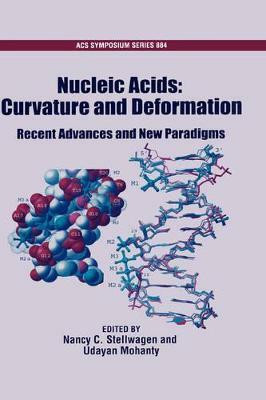Nucleic Acids: Curvature and Deformation(English, Hardcover, unknown)
Quick Overview
Product Price Comparison
Curvature and Deformation of Nucleic Acids: Recent Advances, New Paradigms presents an up-to-date review on the curvature and deformation of nucleic acids. Chapter 1 sets the various chapters in context, as well as describing several controversial topics. Chapter 2 gives a comprehensive review of the literature on DNA bending and describes the current status of molecular dynamics simulations of DNA and protein-DNA complexes. Chapter 3 describes thestructural basis for A-tract DNA helix bending, based on recent NMR structures and other biophysical measurements. Chapter 4 describes the localization of Mg++ ions in the crystal structure of a B-form DNA dodecamerand discusses the relevance of these bound ions to sequence-dependent bending. Chapter 5 discusses the electrostatic energy penalties that result from phosphate crowding in curved DNA oligomers. Chapter 6 presents a quantitative model that predicts the magnitude of the bend caused by asymmetric charge neutralization of DNA phosphate residues. Chapter 7 reviews the structural and dynamic properties of four-way DNA junctions in the presence of metal ions, and it describes the exchange betweenalternative stacking conformers in solution. Chapter 8 documents the fact that a conserved pseudouridine residue in an RNA duplex containing a precursor messenger branch site makes an importantcontribution to the structure of the molecule. Chapter 9 describes structural perturbations that are observed in disease-related mutants of human mitochondrial transfer RNAs. Chapter 10 reviews the thermodynamics of the folding and unfolding of DNA oligomers distorted by the binding of small ligands. Chapter 11 describes a method of constructing DNA fragments for cyclization studies that uses single strand gaps as flexible hinges that allow the correct torsional orientation of the helix ends.Chapter 12 reviews a statistical mechanical model that predicts the stability of reconstituted nucleosomes based on sequence-dependent DNA curvature and flexibility.


